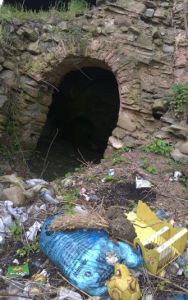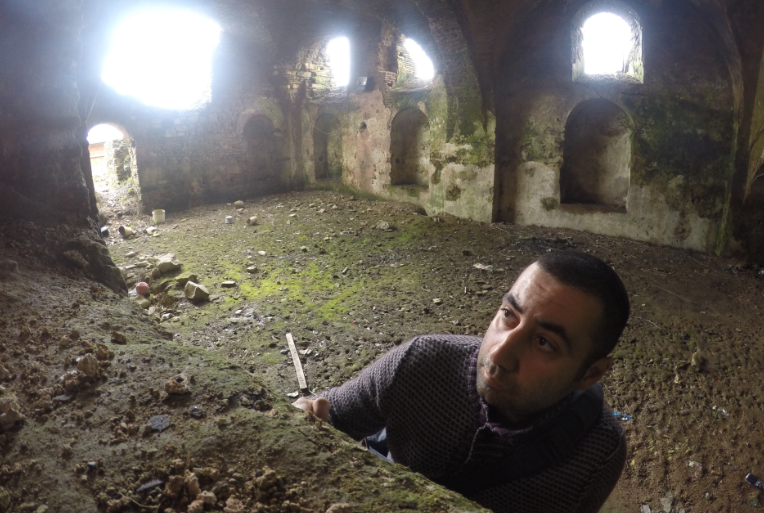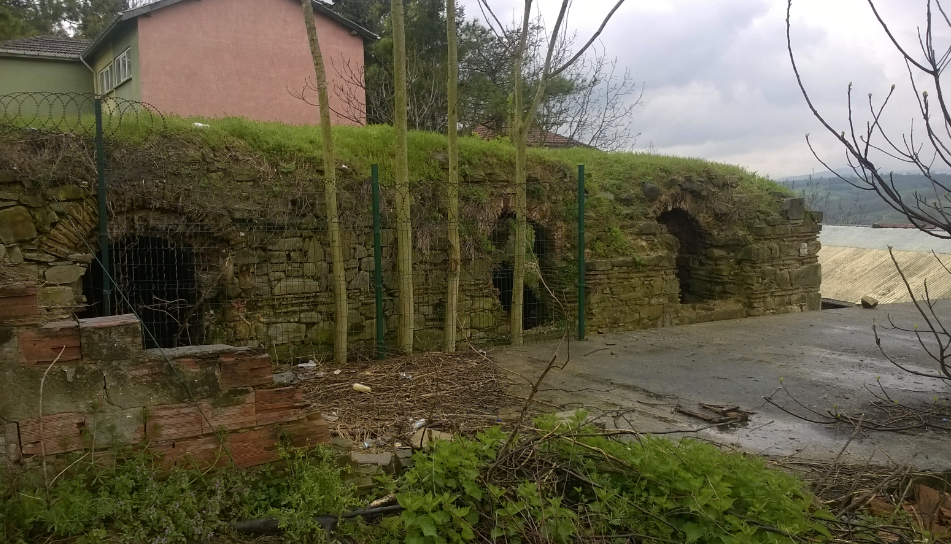Special for the Armenian Weekly
As we begin
Some people look for their stories at their desks, others among the pages of history. For some, history consists of experience and memories, while for others it consists only of measurable figures and numbers found in documents.
In this series, I will explain how Armenians were massacred and expelled from their homes, in the language of those who survived and those who were left behind. Empty houses, stone walls, mills that no longer turn, and fountains that have been running alone for 100 years will explain to us how Armenians lived on this land. With respect to the work of national and international historians, which we see on TV and in the media every April, local historians, performing “micro-historical” studies, will explain the story of the Armenians to us here.
I will embark on two different journeys, first from Istanbul to Antep, and afterwards from Mush to Urfa. I will write about villages, peoples, and cultural legacies that have not been written about until today. My writings will show the psychological damage created by the aftermath of the great destruction that occurred in 1915, and also the notes of an Armenian journalist traveling the same roads that saw exile and destruction 100 years ago.
Izmit – Adapazari
When writing about the Armenian Genocide, the attitude and conditions of the Armenians who lived in the western regions of the Ottoman Empire has been somewhat of a mystery, while the number of those who were deported or slaughtered in the western regions has not been much reflected in the pages of history. But that does not mean it did not happen. For instance, around 250 Armenian intellectuals were arrested on April 24, 1915, in Istanbul, and later executed. The execution of 20 Armenian socialists on June 15 in Beyazit was actually just a reflection of the massacres experienced in the east since Sultan Abdulhamid’s reign. For this reason, I wanted to start my project, “On the Road to Exile: 100 Years Later,” in the city of Izmit, located just a short distance from Istanbul.
My interest derives partly from the fact that my family came from Geyve and Bursa. I have studied the massacres in the Marmara region, and now I hope to contribute to making what has remained from the Armenians more visible.
As an Armenian in Turkey, I grew up in a home where the genocide was not discussed for a long time. My grandparents did not live long enough to see me grow up. Therefore, I learned my family’s story relatively late. When I did learn, I wrote about it in the Radikal newspaper.
However, now I am on a new journey to discover stories. My itinerary takes me from Izmit to Adapazari. Although the current boundaries are very different than they were a century ago, these two cities resemble each other geographically. The plains leading to the Black Sea are green and fertile, able to support many varieties of fruit, and have attracted the attention of those engaged in trade and business.
The Secret Armenian Architecture of Adapazari
The following information was shared in the local newspaper, Dogru Hamle:
“In Adapazari and the surrounding area, the most famous buildings were the homes that resembled the beautiful manors of Bedros Muradayan and Hovhannes Virgayan in Constantinople. The city’s most prominent buildings, both public and privately owned, included churches and stone pathways constructed by the Armenian architect Lord Varteres. Karasu was the work of the same architect who also built the church in Kızılcık (then known as the Aram village) and the church in Yassıgeçit (then known as the Kegam village). In the same way, the wooden Armenian churches in Cukurkoy and Cobanyatagı, then known as Hoviv, are among the examples of important Armenian architecture.”
A Mill with a Wheel that Does Not Turn, a Printing Press that Smells of Sewage
The wooden architecture in this village has unfortunately not been preserved. However, the newly renovated town of Akmeşe, also known by its traditional name Armash, is famous for having the highest number of these structures still remaining.
It’s been five years since our last visit to Armash.
Today, we see a mosque and a primary school in what was once the monastery, a wreck that looks like a stable where the printing press was supposed to be, and the small home for the village priest that is currently filled with sewage, following a landslide…
Meanwhile, two of the water mills that were operated by Armenian families 100 years ago have been restored and are operating in a low capacity by their current owners. The most known mill is already on sale online for 1,650,000 Turkish liras (approximately $620,000).
The remaining fountain of the monastery in the village square has been restored, albeit poorly. However, according to accounts, re-hanging the Armenian writing above the fountain has been the center of some local bureaucratic resistance. This is what is written above the fountain, constructed in 1862 and supposedly called “Işık Çeşme” (The Light Fountain): “The water flowing from this fountain is for everyone, so that they may be enlightened.”
Armash was an important center for Armenians. According to some sources in Armenia, it was founded and given its name by Armenian migrants from the Armash region of Iran. The monastery here was for many years famous for raising numerous Armenian patriarchs and other holy men, and its printing house was famous for producing Armenian school books and history books and distributing them to all four corners of Asia Minor.
The Soul of Armash Lives on in Tibrevank
The founder of the Surp Hac Tibrevank School in Istanbul, Episcopos Karekin Khachaturyan (Trabzonlu), was among those raised at the Armash Monastery. The late travel writer Sarkis Seropyan, whom we lost recently, said that Karekin built Surp Hac Tibrevank School in order to keep the spirit of the closed monasteries of the Tıbrevank School in Armash alive in Istanbul.
Election Insights from the Village Coffeehouse
When traveling through old towns, the most accurate information can be gathered from barbers and the old men who hang around the village coffeehouses. On our journey, next to the mosque that was once a monastery, we found such an establishment. The conversation got deeper after the first round of tea. When a man from the front table said, “In this election we’ll send two guys from HDP [the Peoples’ Democratic Party, to Parliament], and they’ll all see the real Kocaeli!*” I jumped into the conversation.
“Why?” I asked.
“A reaction vote,” they said.
Akmeşe (or Armash) was an independent municipality until only a few years ago, when it was absorbed into a larger adjacent municipality. The local government services don’t work as well as they used to. Akmeşe, which has a household count of 750, is now governed as two neighborhoods with the names “Ataturk” and “Cumhuriyet” (Republic).

Treasure hunters in search of Armenian gold have dug holes in the vicinity of the Armash Armenian mill
“Our families came here from Thessaloniki in 1923. Our grandparents’ birthplace was written as ‘Drama’ on their ID cards. We emigrated from there,” Sabahattin Aktop, who served two terms on the local city council, once said.
Local Historians and Hardware Stores
We encountered a local historian named who, in 2012, published a study on the history of Armas entitled, “The Totality of Bithynia in Akmese – Armas.” His name was Yakup Ozkan.
Ozkan owns the hardware store in Armas. The outside of his store sells hardware, while the inside is filled with Armas’s history. The walls are filled with photos and Ozkan’s own notes of what needs to be researched. There, he took down my notes and shared his own, giving me a copy of his books as a gift.
Ozkan’s interest in this place began in childhood. While showing a photograph towards the end of his book, explains, “The other writer, Yakup Aygil, came here on Feb. 12, 1974. In front of the village coffeehouse, he is giving us information from his historical notebook, and I am listening from the first row. See, there I am in this photo. 11 years old. I guess I always had it in me.”
Thanks to the efforts of local historians like Yakup, the presence of Armenians on this land will never perish. Due to their sincere interest, the stones at least will continue to talk…
* Kocaeli is the new name of Izmit
Aris Nalci’s next piece in the series will feature his interview with Yakup Ozkan.
The post 100 Years Later: On the Road to Exile appeared first on Armenian Weekly.
Source: Armenian Weekly
Link: 100 Years Later: On the Road to Exile








